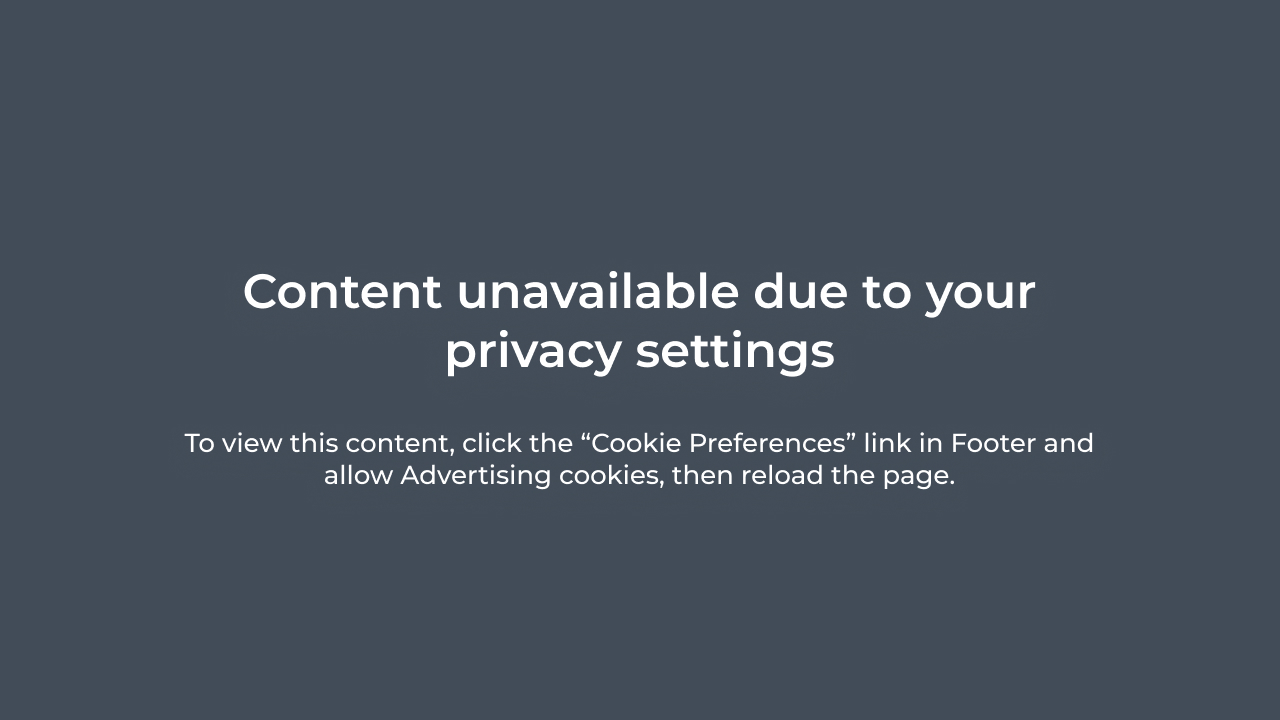- 1.How Has Customer Behavior Changed Post-Pandemic?
- Drive-Through and Takeaway Changes
- Digital Ordering to Surpass In-Person Ordering
- The Influence of Work/Study from Home
- A Change in Restaurant Formats
- 2.Importance of Restaurant Customer Engagement
- 3.How Can You Improve Restaurant Customer Engagement?
- Adopt a Multi-Channel Content Approach
- Improve In-Restaurant Customer Experience
- Use Post-Purchase Engagement Campaigns
- Enable Loyalty Programs and Referral Campaigns
- Collect, Consolidate, and Streamline Customer Feedback
- 4.Wrapping Up
The COVID-19 pandemic has been more than a disastrous public health crisis. It has been the restaurant industry’s most significant challenge to date. Never in the past have millions of restaurants been forced to shut down or make massive changes to the way they operate.
Even in this post-pandemic era, things haven’t returned to normal. Restaurants are functioning at a limited capacity, and while people are coming back to restaurants, their priorities have changed.
Despite the times being challenging, they have also resulted in new restaurant customer engagement and revenue opportunities. For example, digital food ordering is witnessing all-time highs, while drive-throughs are also on the rise.
So, how can restaurants embrace this new era of innovative restaurant technology and drive consistent customer engagement and business growth?
Let’s find out.
How Has Customer Behavior Changed Post-Pandemic?
Before delving into how customer behavior in the restaurant sector has changed, let’s look at a few statistics observed by Simon Kucher in The New Normal for Restaurants research report.
- 37% of consumers want to eat home-cooked meals after the pandemic, compared to 33% before the pandemic.
- Customers intend to order 25% of their meals online via apps and websites, compared to 21% prior to the pandemic.
- The majority of consumers who eat out prefer healthier, higher-quality restaurants.
- Consumers are expected to receive 14% of meals via delivery and 8% of meals via curbside pickup. These numbers were 12% and 5%, respectively, before the pandemic.
These statistics indicate a few significant changes in customer behavior. Let’s discuss them in detail.
Drive-Through and Takeaway Changes
Of course, online food ordering is on the rise, and food delivery is making headlines. But you can’t ignore the rise of curbside pickups and drive-throughs. In the initial phase of the pandemic, when lockdown restrictions were strict, delivery was the only option for both restaurants and consumers.
But in the post-COVID era, takeaways have witnessed a substantial spike and have emerged as a crucial outlet, especially for limited-service restaurants. This trend is likely to continue, as most restaurants are operating with capacity constraints.
Digital Ordering to Surpass In-Person Ordering
This one is obvious. More customers than ever are ordering food online. Digital ordering is not a new trend, as prominent quick-service restaurants (QSRs) and specialty coffee chains have been fulfilling online orders for decades.
However, the big change is visible in traditional QSRs, as they’ve embraced digital upgrades during the pandemic. This trend isn’t limited to QSRs, as full-service restaurants have also experienced a surge in digital orders.
The Influence of Work/Study from Home
A primary concern regarding restaurant customer engagement is the future of the morning commute. Before the pandemic, about three-quarters of US employees had never worked from home, and only 6% of the employees worked primarily from home. Most employees who traveled daily for work preferred QSRs and takeaway restaurants for breakfast and lunch.
As of May 2020, more than 30% of US graduates worked from home, as offices were closed. As offices are now reopening, people are likely to go back. However, the remote work prevalence will never return to 6%. Remote work has become the new normal.
Breakfast and lunch restaurants have been the hardest-hit dayparts by the WFH trend. This asks for major adjustments by restaurants if they want to survive this post-pandemic era.
A Change in Restaurant Formats
To keep up with the trends mentioned above, restaurants are ditching traditional formats and introducing new restaurant formats to align with customer preferences. As in-restaurant dining is likely to be obsolete, restaurants are introducing new features, including:
- Smaller dining rooms
- Multiple pickup windows and drive-through lanes
- Reserved parking spaces for third-party delivery
Importance of Restaurant Customer Engagement
Customer engagement is the cornerstone of business success in all industries, and restaurants are no different. Restaurants that don’t offer an engaging experience involuntarily encourage customers to choose another restaurant.
So, why is restaurant customer engagement so meaningful, especially in the post-COVID era? Let’s find out.
Increases Local Footfall
When you engage your customers, they’re more likely to visit your restaurant. Restaurants can use QR codes, beacons, and other local marketing technologies to send targeted promotions and engage consumers when they’re near their location. This can go a long way in increasing footfall to your restaurant, resulting in more sales and revenue.
Collects Customer Feedback and Improves Operations
Did you know that only one out of 26 customers brings up complaints? This means most customers would stop buying from you without a word. Therefore, collecting feedback is something every restaurant owner should prioritize.
Engaged customers are more likely to give feedback on the experience they had at your restaurant. As a result, you can determine the issues in your service and resolve them promptly. This allows you to overcome service-related hassles and improve operational efficiency and customer experience.
Boosts Customer Loyalty
As many as 70% of restaurant customers never make a return visit. With the restaurant industry becoming more competitive than ever, restaurant owners need to focus on nurturing customer loyalty. Engaging your customers is a great way to do that. When customers feel engaged, they’ll be more interested in returning to your restaurant.
How Can You Improve Restaurant Customer Engagement?
With the restaurant industry being more customer-centric than ever, restaurants need to find effective ways to engage their customers. If done correctly, it can increase footfall, customer loyalty, sales, and revenue. If not, you’ll struggle to set yourself apart and attract repeat customers.
Here is how to make guests happy in your restaurant and improve restaurant customer engagement.
Adopt a Multi-Channel Content Approach
Online marketing has been a topic of concern for ambitious restaurant owners for a while now. The internet has enabled the buying and selling of food online. And with the pandemic in hindsight, every eatery, from a streetside fast food stall to established full-service restaurants, is selling online.
So, unless restaurants don’t make some noise online, they’re at risk of being overlooked. One of the biggest mistakes you can make is concentrating all your efforts and budget on one marketing channel. Of course, every restaurant has a channel that works best for them. But that doesn’t mean you should negate the effectiveness of other channels.
Here are a few things you can do to expand your presence across multiple channels and learn how to wow a guest in your restaurant.
- Make it easier to order across various channels, such as your website, mobile app, third-party food ordering platforms, etc.
- Optimize your website content to increase awareness and generate leads
- Don’t go overboard with channels; two or three are fine.
- Have a social media presence.
- Monitor brand mentions on social media to examine what people are saying about your restaurant.
Improve In-Restaurant Customer Experience
While the footfall in restaurants has decreased, many people still prefer dining inside a restaurant instead of taking the food away or ordering online. The challenge, however, is that ensuring a seamless in-restaurant experience can be more difficult.
You can make several changes to the way your restaurant operates to improve restaurant customer engagement and experience. Implementing contactless technologies is one of the most effective ways to engage in-restaurant customers.
Technology is booming in the restaurant industry. QR code menus are on the rise in all restaurants. Customers can scan the QR code menu from their smartphone and access the restaurant’s menu in real-time – no physical menu involved.
You can create a QR code using a QR code generator and link it to your restaurant’s menu. This way, you’ll be able to provide a touchless experience to your customers.
Some other ways to improve in-restaurant customer experience include:
- Training the staff to treat customers well (and with a smile on their faces)
- Revamping your space to enhance the ambiance
- Giving surprises to your customers (for example, a free birthday cake to a customer celebrating their birthday)
- Providing stellar customer service and using interactive kiosk solutions.

Use Post-Purchase Engagement Campaigns
As mentioned earlier, the majority of restaurant customers don’t return. Have you ever wondered why? While the reasons can vary, the most prominent reason is that they don’t have a reason to revisit your restaurant.
There are around 900,000 restaurants in the European Union alone. Customers have too many options to choose from.
If you want customers to return to your restaurant, you’ll need to engage them after they walk out. You can use several techniques to do that.
Be sure to collect your customers’ phone numbers when billing them at the POS counter. When the customers walk out, you can send them messages asking for feedback. Seeking feedback is one of the most effective post-dining engagement strategies restaurants can implement.
Additionally, you can send your customers weekly offers to inform them about new dishes and discounts. You can also connect with them on social media and share images of your restaurant and delicious dishes.
Enable Loyalty Programs and Referral Campaigns
Investing in strategic loyalty programs can go a long way in boosting customer engagement. With loyalty programs, you can incentivize your customers, which is directly associated with repeat visits and more sales.
When guests who participate in your loyalty program earn new rewards, they want to redeem them as soon as possible. They’ll be encouraged to visit your restaurant again, resulting in a repeat visit. In fact, restaurants that implement a loyalty program witness a 39% spike in repeat customer visits.
Loyalty programs also help streamline communication. When signing up for a loyalty program, customers have to enter their email addresses. This enables seamless communication with your customers, which is an essential element of restaurant customer engagement.
Collect, Consolidate, and Streamline Customer Feedback
It’s not possible to please all your guests. Even if you offer the best Cassoulet in all of France, there’ll be people who won’t be happy. But by collecting feedback, you can determine what people like or dislike about your restaurant. For example, if a particular dish receives bad feedback from multiple guests, it’s time to make changes to that dish.
Moreover, overlooking negative reviews can have adverse effects on your business. As many as 84% of customers trust online reviews. If your restaurant has tons of positive reviews online, you can drive more engagement and increase footfall to your restaurant.
Read more: How to Respond to Negative Restaurant Reviews to Increase Brand Loyalty
Wrapping Up
In this post-pandemic era, the key to driving customer engagement is understanding your customers and their preferences. With safety, hygiene, and a touchless experience being customers’ new priorities, restaurants need to adapt accordingly.
The future of restaurant technology is bright. It’s time to implement the right technologies and strategies to improve restaurant customer engagement and deliver a seamless and satisfying experience.
This article is a guest post.
Author Bio:
Akshay Deogiri is an SEO Outreach Specialist at Beaconstac, enabling businesses to bridge their gap between the digital and offline worlds through custom QR codes.
